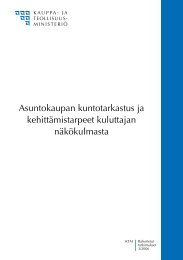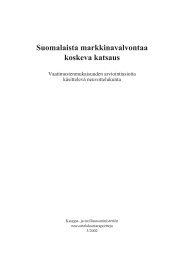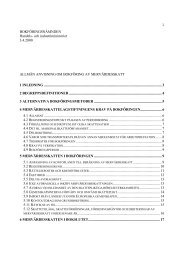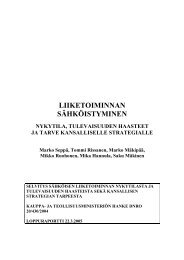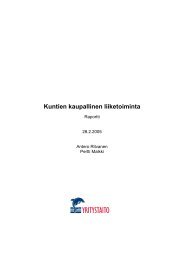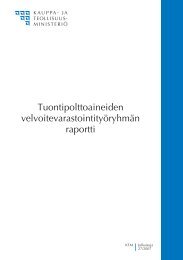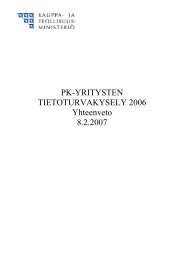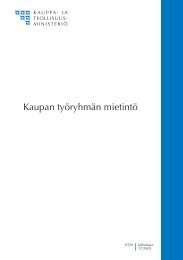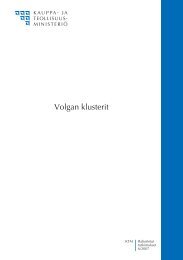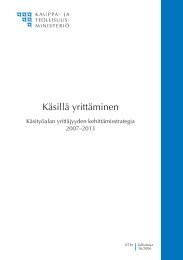Knowledge Intensive Services' Suppliers and Clients
Knowledge Intensive Services' Suppliers and Clients
Knowledge Intensive Services' Suppliers and Clients
Create successful ePaper yourself
Turn your PDF publications into a flip-book with our unique Google optimized e-Paper software.
13<br />
arrangements for clients. New S&T-related KIBS may emerge from professional<br />
services: for example, it is common to find firms emerging to supply software <strong>and</strong><br />
other products to clients <strong>and</strong>/or other firms in their sector.) The staff profile of<br />
KIBS includes many people with higher education <strong>and</strong> professional qualifications.<br />
This is one indicator that we are dealing with a specialised KIBS, rather than a<br />
service concerned with routine solutions to common problems – such as transport<br />
<strong>and</strong> logistics, mass entertainment, postal <strong>and</strong> telecommunications infrastructure<br />
services (much of what such services do is not routine – but a large share of the<br />
effort of their workforce is being expended in routine ways). 2<br />
Evidence as to the knowledge-intensity of different economic activities can be<br />
gleaned from various sources, <strong>and</strong> Figure 1, below, uses the results from the most<br />
recent UK Community Innovation Survey (CIS-3). This allows us to examine the<br />
share of graduates of two kinds – Science, Engineering <strong>and</strong> Technology graduates,<br />
<strong>and</strong> other graduates – in the workforce of firms responding to the survey. The data<br />
have been processed by Bruce Tether, of CRIC. They confirm that KIBS are more<br />
knowledge-intensive than other sectors (by this indicator) <strong>and</strong> suggest that there are<br />
clusters of KIBS relying (a) mainly on “other graduates” <strong>and</strong> (b) also on S&T<br />
graduates. This corresponds to a familiar distinction in the KIBS literature, between<br />
technology-oriented <strong>and</strong> more professional <strong>and</strong> administrative KIBS.<br />
2 A potentially interesting line of enquiry is to examine the hare of R&D or other innovation-related<br />
staff among the senior echelons of such companies, rather than as a proportion of the total workforce.<br />
This might help us distinguish those companies that are innovative <strong>and</strong> deploying new knowledge in<br />
strategic ways, as opposed to those that are simply big.



